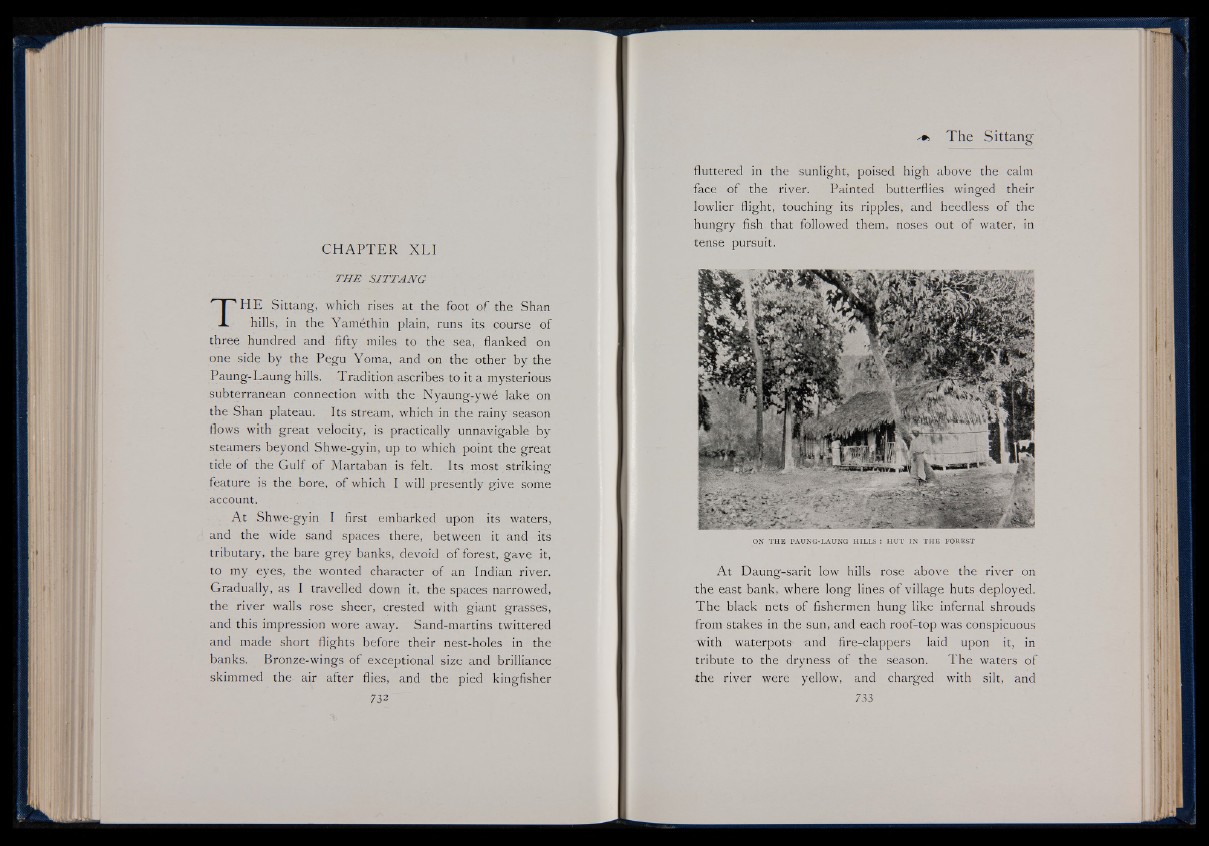
CH A P T E R X L I
THE S IT TA NG
THE Sittang, which rises at the foot of the Shan
hills, in the Yamethin plain, runs its course of
three hundred and fifty miles to the sea, flanked on
one side by the Pegu Yoma, and on the other by the
Paung-Laung hills. Tradition ascribes to it a mysterious
subterranean connection with the Nyaung-ywe lake on
the Shan plateau. Its stream, which in the rainy season
flows with great velocity, is practically unnavigable by
steamers beyond Shwe-gyin, up to which point the great
tide of the Gulf of Martaban is felt. Its most striki•n og
feature is the bore, of which I will presently give some
account.
At Shwe-gyin I first embarked upon its waters,
and the wide sand spaces there, between it and its
tributary, the bare grey banks, devoid of forest, gave it,
to my eyes, the wonted character of an Indian river.
Gradually, as I travelled down it, the spaces narrowed,
the river walls rose sheer, crested with giant grasses,
and this impression wore away. Sand-martins twittered
and made short flights before their nest-holes in the
banks. Bronze-wings of exceptional size and brilliance
skimmed the air after flies, and the pied kingfisher
fluttered in the sunlight, poised high above the calm
face of the river. Painted butterflies winged their
lowlier flight, touching its ripples, and heedless of the
hungry fish that followed them, noses out of water, in
tense pursuit.
ON TH E PAUNG-LAUNG HILLS : HUT IN TH E FOREST
At Daung-sarit low hills rose above the river on
the east bank, where long lines of village huts deployed.
The black nets of fishermen hung like infernal shrouds
from stakes in the sun, and each roof-top was conspicuous
with waterpots- and fire-clappers laid upon it, in
tribute to the dryness of the season. The waters of
the river were yellow, and charged with silt, and